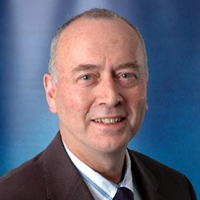Government pension funds market share on the rise
Government-related entities account for almost 70 per cent of assets invested by the world’s 300 largest pension funds, according to a global study by the ‘Thinking Ahead Institute’ (TAI) – an offshoot of global consultancy firm Willis Towers Watson .
The report shows public sector and sovereign wealth funds (SWFs) manage US$7.1 trillion and US$5.3 trillion, respectively, of the total US$18.1 trillion captured in the survey.
Over the 12 months to the end of 2017 the combined sovereign wealth and public sector fund share of the top 300 market grew by 0.2 per cent to hit 68.6 per cent, the TAI report says.
In total, government-sponsored entities represent almost half of the pension funds (144) in the TAI survey: which counts 25 SWFs – including Australia’s Future Fund and the NZ Superannuation Fund (NZS) – among the group.
Just under 65 per cent of the top 300 pension assets are in defined benefit (DB) funds, the report says, down slightly from 65.5 per cent 12 months previously. Over the year, DB assets grew 13.5 per cent compared to 17.6 per cent for defined contribution (DC) funds: ‘hybrid’ funds, which contain both DB and DC components, represent less than 1 per cent of total assets measured in the TAI survey.
Roger Urwin, global head of investment content at Willis Towers Watson, said despite the ongoing global secular shift from DB to DC “it is striking that DB assets continue to grow and form the majority of the total assets”.
“We see the hybrid market as an interesting area of the landscape to watch, with its growth expected to continue as asset owners shift away from traditional DB strategies,” Urwin said in a release.
During the 2017 year total assets under management across the 300 pension funds in the TAI survey grew 15.1 per cent – more than double the previous year’s result (6.1 per cent). The research shows the big end of town grew fatter over the 12-month period with the top 20 funds now owning 41.1 per cent of assets covered by the survey compared to 40.3 per cent in 2016.
However, the TAI study highlights some changing global dynamics with an Indian fund entering the top 20 for the first time. With over US$134 billion under management, the Indian Employees’ Provident Fund rose to 19th on the TAI table, pushing Denmark’s ATP out of the top 20.
Over the last 10 years four emerging market funds have ascended into the TAI top 20 list, the report says, including three Asian entities (South Korea, China and Malaysia) and one from South Africa.
“The increased number of the largest funds originating from emerging market regions is reflective of a longer-term trend, with a great deal of progress being made in terms of governance structures and resiliency,” Urwin says. “These countries are especially interesting to monitor as they are typically in the earlier stages of maturity and can continue to adapt and develop their investment models.”
Nonetheless, US funds continue to dominate the top 300 world, accounting for over 42 per cent of assets and 133 of the funds surveyed. Asia-Pacific (APAC) and European funds represent a respective 27.3 per cent and 26.5 per cent of assets in the survey. But the European sector grew at just 3.8 per cent over the year compared to 6.1 per cent in the APAC region.
The top 20 funds allocate more than 46 per cent of assets to equities on a weighted average basis, the TAI report says, followed by fixed income (36.1 per cent) and alternatives and cash (17.6 per cent). However, the asset allocation varies considerably across regions with North American funds favouring equities (47.7 per cent) and alternatives/cash (34.8 per cent) while APAC holds the highest proportion (52.5 per cent in fixed income) and the lowest alternative exposure (7 per cent).
European funds invest an average 53 per cent in equities and 33.2 per cent in fixed income with the remainder plonked in the alternatives and cash basket.
– David Chaplin, Investment News NZ










